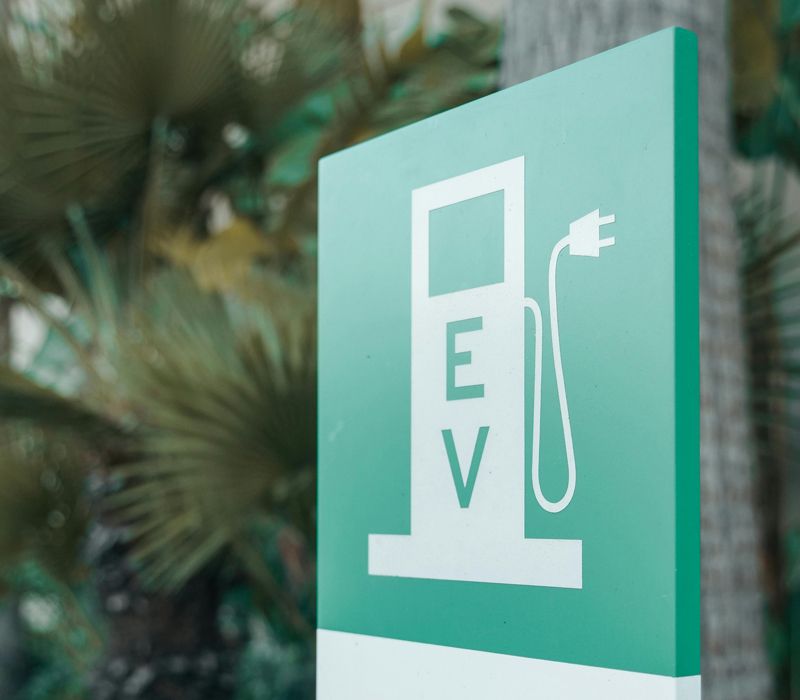EV Industry to Reach $1.1 Trillion by 2030
Worldwide, governments are encouraging people to interchange to electric vehicles by introducing regulations just like the Faster Adoption and Manufacturing of Electric Vehicles scheme and access policies for conventional motors to lessen air pollutants. The shift to E.V. is primarily based on 4 factors: coverage and law, buyer sentiment, OEM method, and the role of corporate company. Although traditional motors are nevertheless accepted, the transition to electric vehicles is occurring speedily, and it’s driven by the need to reduce greenhouse emissions and protect the surroundings.
Global electric vehicle market will grow at a CAGR of 11.42% from 2024 to 2030
Electric vehicle sales have grown substantially, with improved range, performance, and broader version availability. The vehicle industry is preparing for E.V. to play a relevant role in attaining zero-emission goals for 2050. Around the sector, governments are performing to enhance charging infrastructure for heavy-duty vehicles. They’re investing in commercial charging to support those automobiles. California and a few other states in the U.S. directly spend money on constructing the infrastructure required for electric-powered heavy-duty motors.
Over the next decade, Electrify America plans to invest $2 billion in Zero Emission Vehicle (ZEV) infrastructure throughout the United States, with a portion of that funding, $1 million, being allotted to California. California is one of the largest ZEV markets in the world, and the California Energy Commission (CEC) has already invested more than $62 million within the nation’s hydrogen refueling network.
The intention is to establish two hundred hydrogen refueling stations in California with the aid of 2025, that specialize in light-duty motors until 2020. Recently, the Government authorized a plan to allocate up to $ 115 million in investment for hydrogen refueling infrastructure, which includes fueling solutions for medium- and heavy- vehicles. These efforts via the government are expected to create favorable opportunities for the electric vehicle market.
The worldwide electric vehicle market was US$ 538.74 Billion in 2023.
Worldwide market has been spearheaded by Battery Electric Vehicles (BEVs)
The global market for electric vehicles can be divided into three categories: Battery Electric Vehicles (BEV), Hybrid Electric Vehicles (HEV), and Plug-in Hybrid Electric Vehicles (PHEV).
Battery electric-powered vehicles (BEVs) have emerged as trailblazers, guiding the global electric-powered vehicle (E.V.) market toward a sustainable future. With their reliance on rechargeable batteries, BEVs put off tailpipe emissions, addressing environmental issues and using the shift towards cleaner transportation.
Technological improvements and increasing ecological awareness have propelled the surge in BEV adoption, reshaping the vehicles’ panorama. Governments globally incentivize electric-powered mobility, foster infrastructure improvement, and encourage automakers to put money into BEV innovation. As BEVs gain traction, their pivotal role in reducing carbon footprints and dependence on fossil fuels underscores their management in the ongoing transformation of the global E.V. Market.
Miles range will dominate in the upcoming future
By Range, the global electric vehicle market is divided into 150 Miles, 151-300 miles, and Above 300 Miles.
The automotive landscape is on the brink of a widespread transformation, with Electric Vehicles (EVs) boasting a range of 151-300 miles rising as the dominant force quickly. This strategic range balances addressing a variety of anxieties and assembly meeting commuting needs. As battery technology advances and charging infrastructure expands, consumers are increasingly attracted to the practicality and prolonged mileage presented by using those E.V. This shift signals a pivotal moment inside the industry, marking the imminent dominance of mid-variety E.Vs and a significant step towards mainstream adoption of sustainable and green transportation solutions.
Passenger automobiles will capture almost half of the market revenue
By Vehicle Type, the global electric vehicle market is classified into two-wheelers, passenger cars, and commercial vehicles.
Passenger cars are set to wield tremendous impact in the dynamic landscape of the Electric Vehicles (EVs) industry, capturing the largest market sales. This trend reflects buyer interest and the attractiveness of electrical passenger motors as viable options to conventional combustion-engine cars. Government incentives, improvements in battery technology, and a surge in environmental cognizance propel this shift.
The comfort reduces operational costs, and an increasing charging infrastructure contributes to the rising recognition of electric passenger vehicles, positioning them as key players in steering the E.V. market towards a future wherein sustainability and innovation converge.
Mid-priced Vehicle segment will likely develop at the loftiest growth during the upcoming duration
By Vehicle Class, the global electric vehicle market is sub-segmented into Low-Priced, Mid-Priced, and Luxury.
The Mid-Priced Electric Vehicle (E.V.) segment is on the brink of substantial growth and is projected to attain the highest CAGR shortly. This surge reflects a burgeoning consumer interest in electric vehicles within an affordable price range. Technology advancements and increased environmental awareness contribute to the expanding market share of mid-priced E.V.s. As consumers seek cost-effective yet sustainable transportation options, the poised elevation of the CAGR underscores the pivotal role mid-priced EVs will play in steering the automotive industry toward widespread adoption of electric mobility solutions.
Electric Vehicle market in the United States is anticipated to capture maximum revenue
The U.S. electric vehicle market has rapidly evolved, fueled by rising consumer demand, government incentives, and technological strides for sustainability. Various federal and state policies, encompassing tax credits and infrastructure expansion initiatives, promote electric vehicle adoption. Advancements in technology enhance E.V. performance, Range, and charging, with automakers investing in research and development. The U.S. witnesses an expanding charging network, supporting increased E.V. numbers.
Major automakers commit to electric vehicles, facilitating industry transition. Consumer awareness of climate change boosts E.V. interest, driven by lower costs, reduced maintenance, and advanced technology despite upfront costs, declining battery prices, and incentives that bridge affordability gaps.


